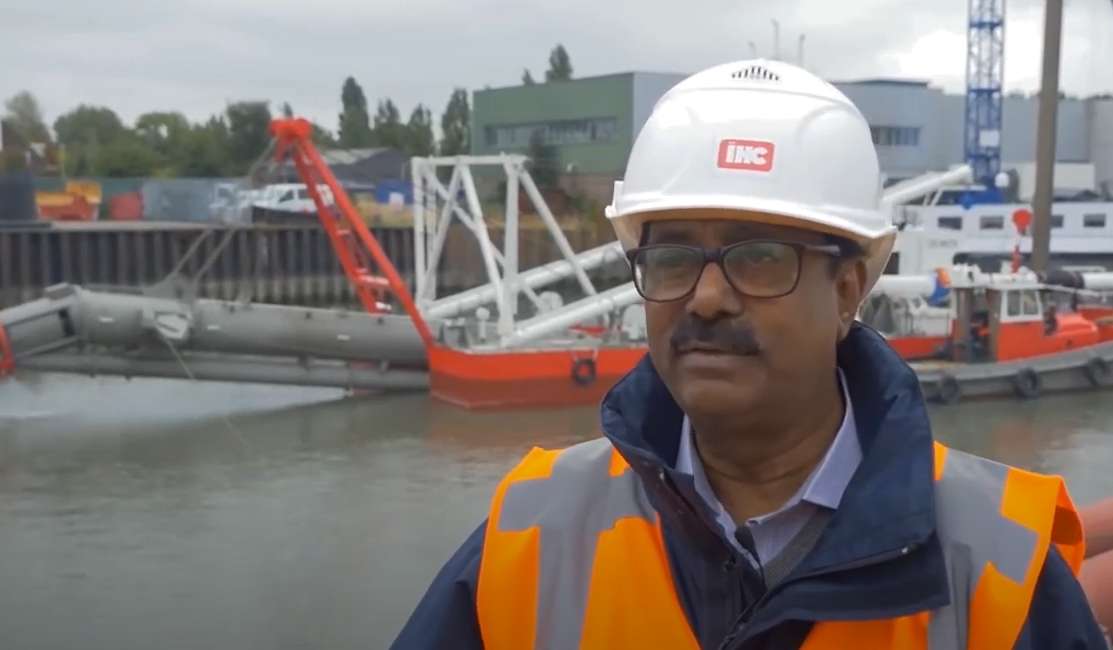Climate change, flooding and drought

In many parts of the world, extreme weather events due to climate change have severe consequences. They are leading to an increased risk of flooding as well as a severe risk of drought during dry periods. Expanding populations and the growing demand for land to build housing and economic zones – particularly in delta areas – is creating considerable challenges for governmental bodies.
Dealing with effects of climate change
Dealing with the life-threatening effects of climate change, particularly in countries such as India and Bangladesh, is a constant battle. Dredging projects ensure that the local population is protected from the danger of flooding – especially during the monsoon season. At the same time, it ensures that the transport of goods by water can safely continue in the dry season, when river levels are much lower.
Maintaining waterways
Any huge inland delta offers many opportunities for transport over water, as long as the waterways are safely maintained. Because of the constant challenge to keep thousands of kilometres of rivers, tributaries and canals regularly dredged in these regions, the relevant authorities rely on a range of dredging solutions. These solutions help to keep existing channels navigable, as well as create new inlets and waterways for the benefit of moving goods and people.
Efficient dredging solutions
A deep understanding of the challenges facing governmental bodies allows us to work closely with them to configure reliable and efficient dredging solutions. These solutions create the optimal conditions for sustainable economic activity to prosper in these challenging areas.
An example: the constant battle of Bangladesh
A good example of this is the Ganges-Brahmaputra-Meghna region of Bangladesh, where the area’s two main rivers alone deposit over a billion tonnes of silt per year, which greatly increases the risk of flooding. Conversely, without regular dredging, the high sedimentation rates mean that there isn’t sufficient water depth for the safe passage of ferries, cargo ships and other vessels during the dry season.
Having delivered the first dredgers to Bangladesh in 1972, we are well equipped to supply equipment and expertise to the two governmental bodies charged with dealing with the gigantic dredging works in the delta – the Bangladesh Inland Water Transport Authority (BIWTA) and the Bangladesh Water Development Board (BWBD). In 2016, the new subsidiary, DBL Dredging Limited, ordered its first vessels – two standardized Beaver 50® cutter suction dredgers (CSDs), and two Delta Multi Craft (DMC) 1050 work boats. The two Beavers® have been delivered with a full equipment package, including a spud carrier pontoon, anchor boom installation, production measuring system and dredge track presentation system (DTPS).

The new dredgers will play a major role in achieving the company’s objective to contribute to resolving the gigantic siltation problem in more than 300 rivers in Bangladesh.
Mr. Md. Matiar Rahman - Chief Operating Officer of DBL Dredging
Rising to the challenge
To help both organisations tackle such an ambitious dredging plan, we have supplied a comprehensive portfolio of standard modular dredging vessels, equipment and services. These are helping to mitigate the multitude of challenges faced with regard to navigability, flood control and irrigation.
In fact, we’ve delivered more than 100 dredgers, work boats, booster stations and equipment packages to date. As for those first two dredgers we delivered back in 1972: they are both still in operation today and continue to play their part in helping combat the huge siltation problem affecting around 300 of the country’s rivers.
With such a large installed base, we decided to open a local service center in Dhaka in 2016. Our local, skilled mechanical, hydraulic and electrical engineers and dredgemaster assure a maximum uptime of our dredgers in Bangladesh.

We can help you!
Let us help you dealing with the effects of climate change. Get in touch and one of our experts will help you.
